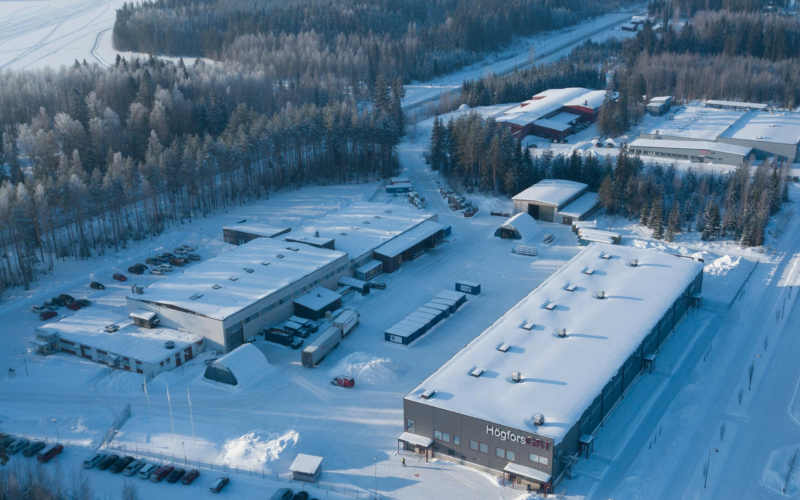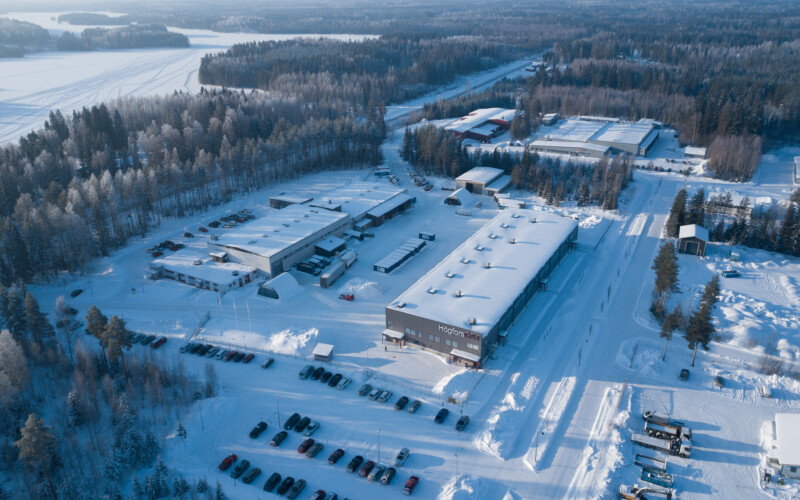HögforsGST has developed a new 3-step Mid-Cooling Connection for district heating substations, which differs from other commonly used connections. The 3-step connection improves the Delta T, which means that the new substation is significantly more energy efficient than existing district heating equipment. Antti Hartman, CEO of HögforsGST, talks in more detail about the new district heating innovation.
What is a 3-step Mid-Cooling Connection and where it can be used?
– 3-step connection, also known as the Mid-Cooling Connection (MCC) is an internal connection of the FiksuGST smart substation. The new connection improves district heating’s efficiency and Delta T. In other words, the basic principle is to use energy more efficiently. The main benefits of the Mid-Cooling Connection come from the fact that the water flowing from the domestic hot water heating exchanger is utilized in the heating circuit before it is returned to the network, says Hartman
– The MCC works in all district heating properties with domestic hot water circulation. A vast majority of district heating properties fall into this category. Currently, MCC is utilized in apartment buildings, but the heating of detached houses could also be significantly improved with MCC technology.
How is an MCC substation different from a “traditional” substation?
Cooling of the district heating water has long been identified as an important part of district heating energy efficiency. The MCC is a clear technological improvement to achieve better cooling. Compared to traditional connection models, Mid-Cooling Connection is a more efficient and sophisticated way to transfer energy.
– Currently, the most common connections are the basic connection and 2-step connection. In the basic connection, the heat exchanger of the domestic hot water and space heating are in not connected to each other. In the 2-step connection, the water returning from the heating circuit is utilized for domestic hot water heating.
– The 2-step connection improves the cooling of district heating water compared to the basic connection, but the 3-step Mid-Cooling, as the name implies, is a more advanced version of the 2-step connection. In the Mid-Cooling Connection of the FiksuGST, the district heating water is first directed to the domestic hot water heat exchanger, from there to the heating circuit and once again to heat the domestic hot water. District heating water is utilized in three different stages before being returned to the district heating network. This way, the energy is used as efficiently as possible.
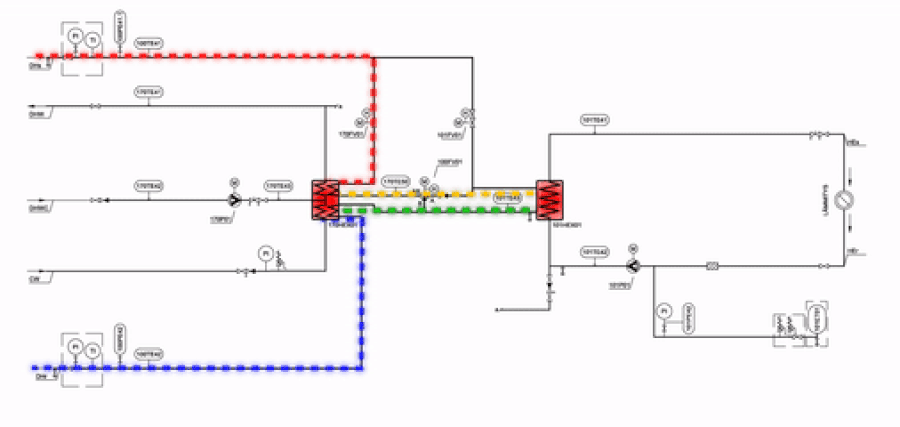
The 3-step Mid-Cooling Connection utilizes the district heating water three times, which improves Delta T significantly
What are the benefits of the Mid-Cooling Connection?
– The biggest benefit is better efficiency of the entire district heating system. This is because the MCC returns cooler water to the network, which enables more efficient energy production. The improved efficiency of flue gas scrubbers and large heat pumps are good examples of this, Hartman says.
– For the property owner, these benefits are realized in the pricing of district heating, as more efficient energy production can lower district heating prices. Several energy companies are planning or have already introduced pricing models in which the customer is rewarded for improved cooling of the district heating water in the form of a price reduction, Hartman reveals.
– Of course, the features of the substation itself will also be useful, as the FiksuGST substations are equipped with a smart control system.
The first FiksuGST substations with the Mid-Cooling technology have been commissioned during the summer, and the data obtained during this heating season already shows that the MCC is really improving the cooling of district heating water.
– According to calculations made by AFRY, the MCC improves district heating water’s cooling by up to 10 degrees, depending on the heating conditions and domestic hot water consumption. The data collected from properties equipped with the MCC proves that the calculations are correct and the effects of the MCC can be even greater than what the calculations have estimated, Hartman rejoices.
– Some members of our staff refer to the MCC as the Return Temperature Killer. Based on this data, I think that’s a fair thing to say, Hartman laughs.
According to AFRY’s engineers, a one-degree decrease in return temperature will improve the efficiency of the entire district heating system by about one percent. The large-scale introduction of MCC technology could therefore improve district heating efficiency by up to 15%. This can mean a huge reduction in the use of combustion-based fuels in district heating production due to the increased efficiency of renewable energy sources.
This is how the MCC works
The effects of the 3-step Mid-Cooling Connection are best seen when looking at the data from different properties. The following data is provided by HögforsGST’s Fiksu Control System from three different properties: one with basic connection, one with 2-step connection and one with the 3-step Mid-Cooling Connection. All properties are radiator-heated district heating properties. Outdoor temperature is 9-12 degrees.
Basic connection

The first graph shows the inlet temperature (red line) and the return temperature (blue line) from a terraced house with a basic connection. The inlet temperature is 75 degrees and the return temperature is approximately 45 degrees.
2-step connection
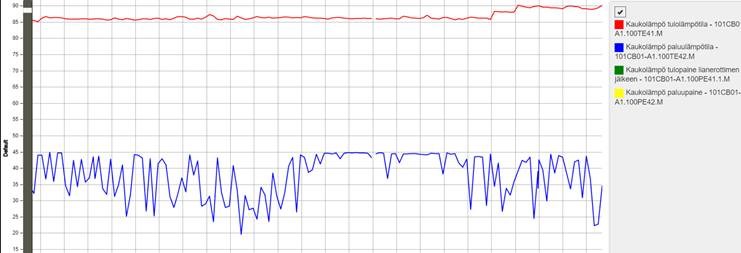
The second graph shows the temperatures of an apartment block equipped with 2-step connection. The inlet temperature is 85 degrees and the return temperature is on average approx. 40 degrees.
3-step Mid-Cooling Connection
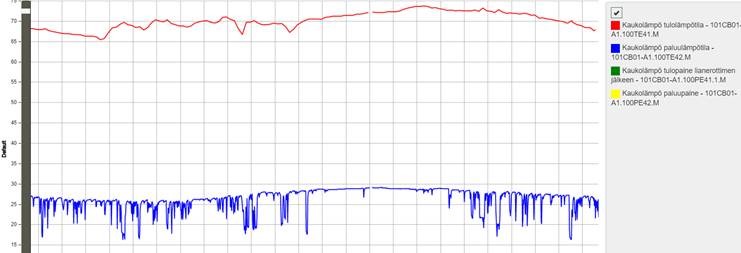
The third graph shows how the effects of the 3-step MCC in a multi-storey terraced house. The inlet temperature is 75 degrees, but thanks to the MCC, the return temperature is as low as 25 degrees.
Who should consider a FiksuGST substation with Mid-Cooling Connection?
– MCC technology should be considered especially for larger new properties, such as apartment buildings. Also, older apartment buildings that are considering a substation renovation can benefit significantly from the opportunities offered by the MCC technology. The smart features of the FiksuGST substation also give benefits to the property, Hartman says.
– Costs are obviously at the top of renovators’ minds. The additional cost of MCC technology is a mere few percent of the equipment investment, but the investment pays back quickly thanks to the benefits mentioned earlier.
How does the Mid-Cooling technology fit into the scheme of Fourth Generation District Heating (4GDH) and district heating development in general?
The essential goal of Fourth Generation District Heating (4GDH) is to be able to produce and use district heating in a renewable way. The efficient utilization of energy sources produced without combustion, such as waste heat, requires lowering the temperatures of the district heating network, for which the MCC technology is a great solution.
– A reduction in inlet temperatures easily leads to an increase in flow to meet the power demand of the current equipment. Increased flow may cause unwanted bottlenecks during peak consumption periods, which can endanger the security of supply. FiksuGST with Mid-Cooling Connection uses the energy in district heating water more efficiently, so temperatures can be lowered without having to increase the flow. In other words, the energy company lowers the inlet temperature and the MCC lowers return temperature, Hartman states.
FiksuGST with a Mid-Cooling Connection is a cost-effective way to reduce the energy consumption of a property and improve the efficiency of the entire district heating system: The smart control system of the FiksuGST substation is designed to optimize energy consumption and save money, while the MCC makes the whole system more efficient by improving Delta T.



